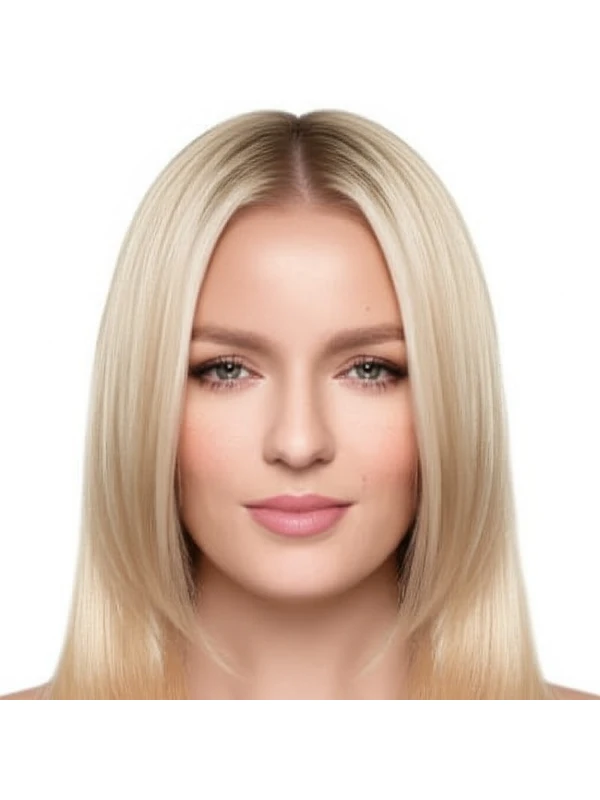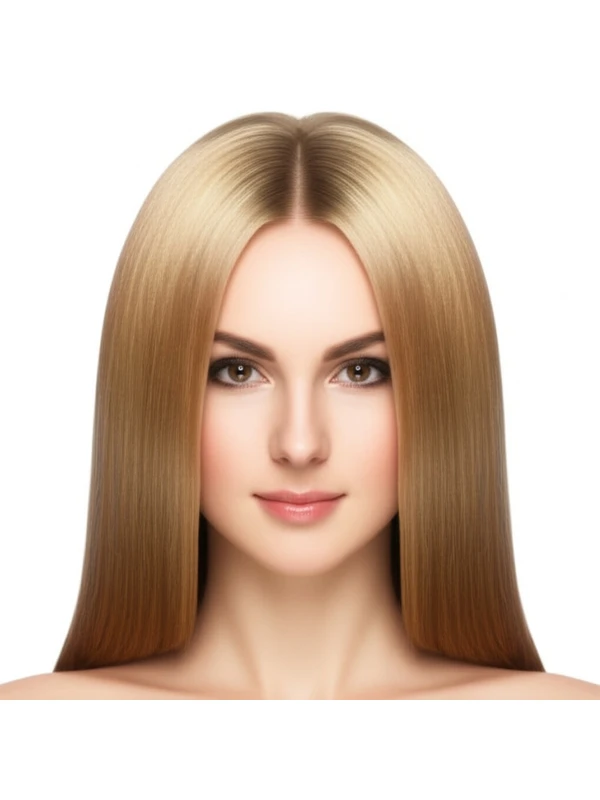#Double Process Blonde: A Complete Guide
Achieving a beautiful blonde look often involves more than just one step. The “double process” is a common and powerful technique used by hair colorists to create varying levels of lightness and dimension. Here’s everything you need to know about it.
#1. What Is the Double Process & How Does It Work?
The double process refers to two separate lightening steps applied during your salon visit. The first step, often called “bleaching,” lifts the natural pigment from your hair using a lightener and developer (a chemical oxidizer). This is followed by a second application of bleach or tone, frequently with a lower volume developer.
Tools Used:
- Lightener: A powder that, when mixed with developer, opens up the hair cuticle to release color molecules.
- Developer: Comes in different volumes (10, 20, 30, 40) indicating its strength—higher volume means more lift but also potentially more damage.
- Foils or Caps: Used for precise product placement and isolation of hair sections.
- Toner/Gloss: Applied after the double process to neutralize unwanted tones (like brassiness) and add shine.
Placement & Timing:
The colorist will strategically place foils, or use a cap highlighting technique, around your head. The amount of time each lightener mixture sits on your hair depends on your natural color level, desired lightness, and the strength of the developer used. This is carefully monitored to prevent over-processing. A toner/gloss application follows once the lifting process is complete.
#2. Best Use Cases: What Can a Double Process Achieve?
The double process offers incredible versatility for creating various blonde looks:
- Full Blonde Transformation: Lifting hair significantly from darker bases (brown, dark auburn).
- Dimension & Contrast: Creating highlights and lowlights to add depth and movement.
- Root Blur/Shadow Root: Leaving a slightly darker band at the roots for a softer grow-out. This is often achieved with strategic foiling placement during the double process itself or through subsequent toning techniques.
- Face Framing: Brightening strands around the face to accentuate features and add brightness.
- Coverage of Darker Grays/White Hair: Achieving even, consistent blonde tones throughout the hair.
#3. Who Suits a Double Process Blonde?
While almost anyone can achieve a double process blonde, it's crucial to consider your natural factors for optimal results and hair health:
- Natural Color Level: Generally works best on levels 2-6 (light brown to medium auburn). Those with darker starting points (levels 7+) may require multiple sessions.
- Undertone: Cool undertones (pink, blue) generally suit cooler blondes (ashy, platinum). Warm undertones (yellow, gold) often look best with warmer blondes (golden, honey). A colorist can assess this accurately.
- Hair Type/Texture:
- Straight & Wavy Hair: Generally handles the process well with proper care.
- Curly & Coily Hair: Requires extra caution and moisture due to its natural porosity. Smaller, more strategic sections are often used. Protein treatments may be recommended beforehand.
- Hair Density: Thicker hair can handle more product; finer hair requires a lighter touch.
- Hair Length: Works on all lengths, but longer hair might require more processing time and potentially multiple applications.
- Lifestyle: Consider your commitment to maintenance (see section 5). Frequent salon visits and specialized care are essential for maintaining the blonde’s vibrancy and health.
#4. Comparing Techniques: Double Process vs. Alternatives
Understanding how double process differs from other techniques is key:
- Balayage & Foilyage: These are freehand or strategically placed highlighting techniques that can incorporate a double process, but don't inherently define it. Balayage creates softer, more blended highlights without foils; foilyage uses foils with balayaged placement for increased lift.
- Highlights (Traditional): Traditional foil highlights can be achieved through a double process, but the term "highlights" often refers to just the initial lightening step.
- Root Smudge/Shadow Root: These are toning techniques applied after a highlight or double process to soften the line between the roots and the lighter hair. They aren't part of the lifting process itself. A shadow root can be incorporated into a double process plan, however.
#5. Maintenance & Longevity: What to Expect
Maintaining your blonde requires commitment:
- Salon Timing: Expect touch-ups every 6-12 weeks depending on growth rate and desired level of lightness.
- Toner/Gloss Refresh: Toners fade quickly, requiring reapplication every 4-8 weeks to maintain the desired tone and prevent brassiness. Glosses add shine and help seal the cuticle.
- Grow-Out Behavior: The grow-out line will be more noticeable with a stark contrast between your natural roots and the blonde sections. Strategic placement during the initial process can minimize this.
- Budget/Time Planning: Double processing is an investment—both financially (expect $200-$500+ per session) and time-wise (allow 3-4 hours).
#6. At-Home Care Tips for Blonde Hair
Protecting your color-treated hair is crucial:
- Wash Cadence: Reduce shampooing to 2-3 times a week. Use sulfate-free shampoos specifically designed for blonde or color-treated hair.
- Heat Protection: Always use a heat protectant spray before using any hot styling tools (blow dryers, straighteners, curling irons).
- Color-Safe Care: Use conditioner and deep conditioning masks regularly to replenish moisture and repair damage. Purple shampoos can help neutralize brassy tones (use sparingly – too much can lead to a muddy or lilac hue!).
- UV Protection: Protect your hair from sun exposure with hats or UV protectant sprays, as the sun can fade color and cause dryness.
#7. Pros & Cons of Double Process Blonde
Pros:
- Highly customizable: Allows for precise placement and varying degrees of lightness.
- Creates dimensional looks that enhance features.
- Can cover significant amounts of gray hair.
- Offers a dramatic transformation from darker shades.
Cons:
- Potentially damaging to the hair if not done correctly. Requires skilled colorist.
- High maintenance and can be expensive.
- Requires commitment to specialized at-home care.
- Can result in unwanted tones (brassiness) without proper toning.
#8. Salon Consultation Script: What Your Colorist Will Ask
Your consultation is vital! Be prepared for these questions:
- What is your desired level of lightness? Show me pictures!
- Do you have any concerns about damage or previous color treatments?
- What’s your current hair care routine like (shampoo, conditioner, styling products)?
- How often are you willing to come back for touch-ups?
- Are there any areas of your hair that need extra attention (e.g., gray coverage, face framing)?
- Do you have a preference for warm or cool tones in your blonde?
#9. Frequently Asked Questions
- Is double processing damaging to my hair? It can be if not done correctly. A skilled colorist will assess your hair’s health and use appropriate techniques and products to minimize damage.
- How long does the entire process take? Typically 3-4 hours, but can vary depending on complexity.
- Can I do a double process at home? While possible, it's strongly discouraged without professional training due to the risk of uneven results and significant damage.
- How long will my blonde last before needing a touch-up? 6-12 weeks is typical, but depends on your hair growth rate and desired level of lightness.
- What does "toning" do after the double process? Toning neutralizes unwanted tones (like brassiness) and adds shine to your blonde.
- Can I get a double process if my hair is already highlighted? Yes, but it's crucial for your colorist to assess the existing highlights and plan accordingly to avoid damage or unpredictable results.
- What’s the difference between a toner and a gloss? A toner primarily corrects tone; a gloss adds shine and seals the cuticle while enhancing color vibrancy. They can often be combined.
- How do I prevent my blonde from turning brassy? Use purple shampoo sparingly, invest in quality color-safe products, and schedule regular toning appointments with your stylist.

